

HOME England Figures London M6 Toll NEWS Road Pricing Scotland Wales & Severn


HOME
England
Figures
London
M6 Toll
NEWS
Road Pricing
Scotland
Wales & Severn
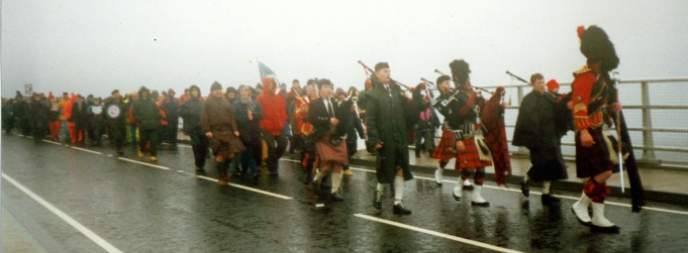 | ||
| SKAT campaigners on the bridge |
 | Forth Bridges Visitor Centre Trust (information on the road bridge and the neighbouring railway bridge) |
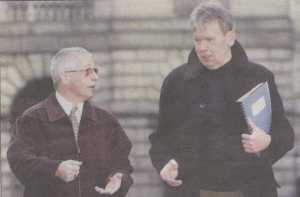 |
Court hearing This picture, from Herald & Post, shows George Campbell and Tom Minogue on the 2nd December 2004 outside the Parliament House in Edinburgh, home to the Court of Session. The substantive case on the legality of the tolls was not decided, as the judge determined that he could not give an "interdict" to stop the Inquiry proceeding. |
 Larger picture - Skye Bridge - November 2004
Larger picture - Skye Bridge - November 2004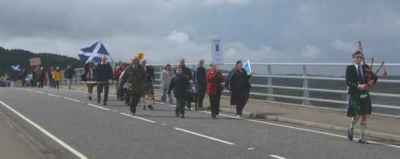 |
SKAT show the flag This picture shows SKAT's march over the bridge on 3 July 2004:- "to celebrate the upcoming Independence of the people of Skye from the financial noose around our neck that is the extortionately high tolls on the Skye Bridge" |
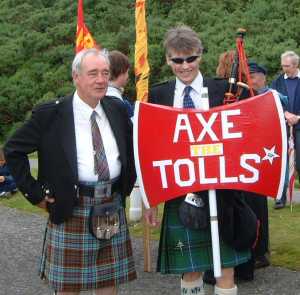 |
Picture on the left shows SKAT general secretary Andy Anderson (one without the axe!) at the July 2004 demo. Picture on the right is from an earlier march (don't know how the Stars and Stripes got in!) | 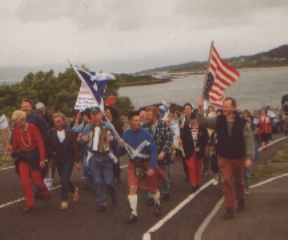 |

HOME England Figures London M6 Toll NEWS Road Pricing Scotland Wales & Severn